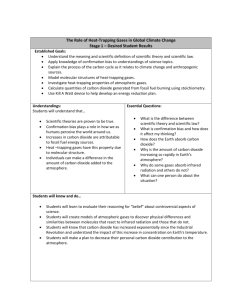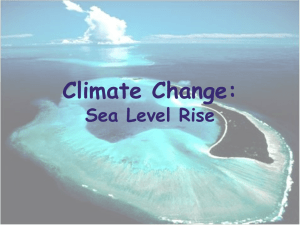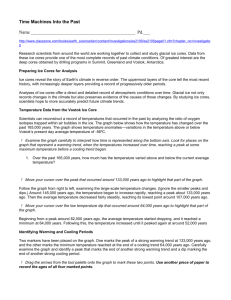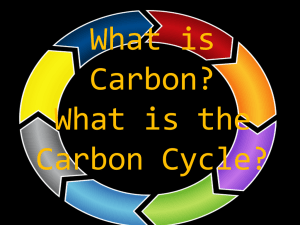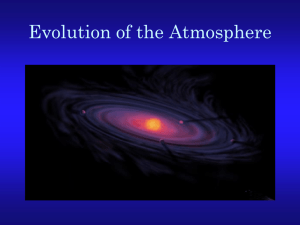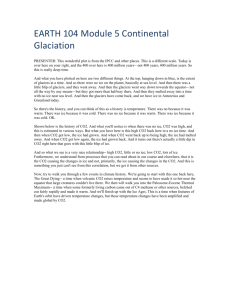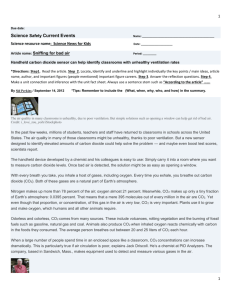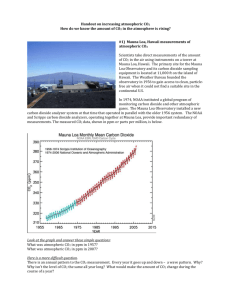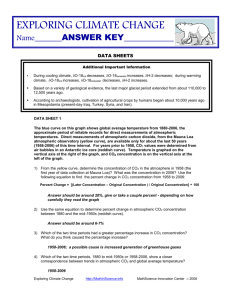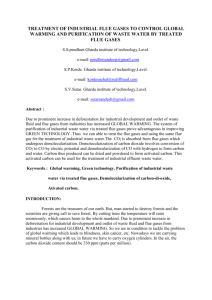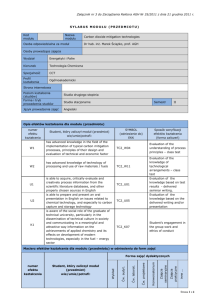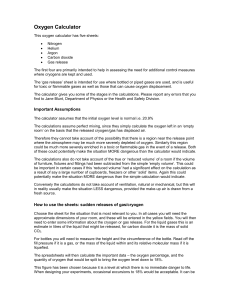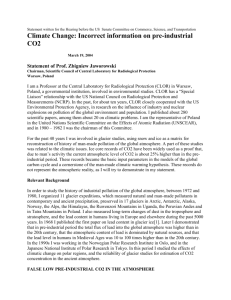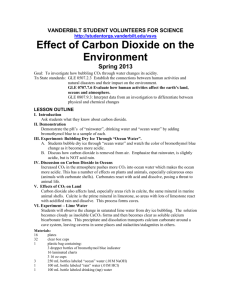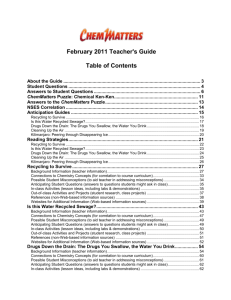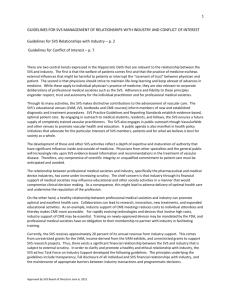Worldwide Damage Due to “Natural” Disasters, 1980
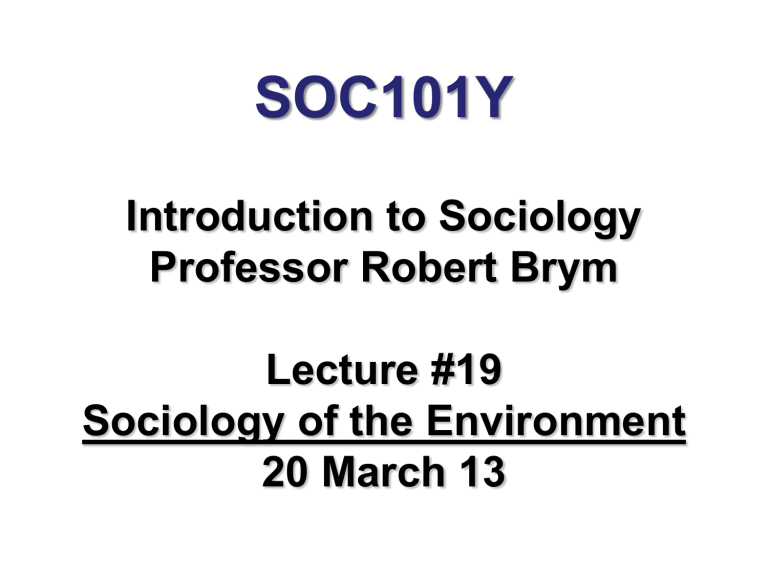
SOC101Y
Introduction to Sociology
Professor Robert Brym
Lecture #19
Sociology of the Environment
20 March 13
Important Terms
Technology is often defined as the application of scientific principles to the improvement of human life.
Normal accidents are mishaps that occur because the very complexity of modern technologies ensures they will inevitably fail, though in unpredictable ways.
A risk society is a social system in which technology distributes danger and advantage among all social groups, although some are more exposed than others are.
Global Warming and Polar Ice
1. Heat-trapping gases produced mainly by human activity collect in the atmosphere (CO
2
[carbon dioxide], CH
4
[methane], etc.)
2. More heat enters the atmosphere than escapes because some of it is absorbed and some of it is reflected back by the blanket of heat-trapping gases.
3. Heat melts ice, creating water and revealing tundra.
4. Tundra releases CH
4
, a more effective heat-trapping gas than CO
2
.
5. Water reflects less heat than ice does because it’s darker than ice, speeding up global warming.
(2)
Ice (4)
Heat-trapping gases (C0
2
, CH
4
, etc.)
(4)
Tundra
(3)
(5)
(1) gases from burning fossil fuels, etc., released into atmosphere
Water
Annual Mean Global Surface Air
Temperature and Atmospheric Carbon
Dioxide Concentration, 1880-2009
14.8
14.6
14.4
14.2
14
13.8
13.6
13.4
13.2
13
Safe upper limit: 350 ppm
500
400
300
200
100
0
Year
Note: Pre-1959 carbon dioxide concentration estimates come from intermittent Antarctic ice core measurements. Post-1958 carbon dioxide concentration estimates are based on continuous atmospheric measurements from the Mauna Loa Observatory in
Hawaii.
Global Warming, 1880-2012
BIG VERSION http://svs.gsfc.nasa.gov/vis/a000000/a004000/a004030/2012_GISSTEMP_ update_datescolorbarcentered.mp4
or
SMALL VERSION http://svs.gsfc.nasa.gov/vis/a000000/a004000/a004030/2012GISStemp_d atescolorbarcentered.m4v
As early as 2050, there will be no summer sea ice in the Arctic http://www.nytimes.com/interactive/2007/10/01/science/20071002_ARCTIC_GRAPHIC.html?th&emc=th#
Ocean Acidification
The high level of CO
2 in the atmosphere is partly absorbed by the oceans, causing them to acidify (lowering pH due to the formation of carbonic acid) faster than at any point in the past 300 million years.
56 million years ago, ocean pH fell by .01 unit per century.
Now, ocean pH is falling by .1 unit per century.
Coral reefs, oysters, salmon, and other species are threatened by ocean acidification.
Worldwide Insured Losses Due to
“Natural” and Human Catastrophes,
1970-2009 (in 2005 $US billions)
$US billions
Global Fossil Fuel Reserves and the 2
"
C
Carbon Budget
Oil: 22% Gas: 13%
284 billion tons used by 2011
These calculations exclude heat-trapping gases others than carbon dioxide, such as methane.
Environmental issues become social problems when…
1.
policy-oriented scientists, the environmental movement, the mass media, and respected organizations discover and promote the issues;
2.
people connect real-life events to the information learned from these groups; and
3.
scientists, industrial interests, and politicians who dispute the existence of environmental threats must fail to convince the public that the threat is illusory and human intervention is unnecessary.
Environmental racism is the tendency to heap environmental dangers on the disadvantaged.
Total particulate matter, short tons per capita
6
Northwest Territories
4
2
Yukon
Alberta
Saskatchewan
0
0
Manitoba
20 40 60
Aboriginals as percent of population
80
Fort Chipewyan:
250 km. downstream along the Athabasca
River from the industrial centre of the Alberta tar sands
Air Pollution and Poverty in Toronto Neighbourhoods
Trucks in China http://www.nytimes.com/interactive/2007/12/08/world/asia/choking_on_growth_7.html#story4
Going for a walk in Tiananmen
Square, Beijing, 21 January 2013
Sixteen of the world’s 20 most polluted cities are in China. Air quality in Beijing deteriorated beyond World Health
Organization (WHO) safe limits every day in January 2013. Official measurements of fine airborne particulates
(PM2.5) that pose the largest health risks rose to 993 micrograms per cubic meter in Beijing on 12 January 2013, compared with WHO guidelines of no more than 25 micrograms per cubic meter.
The Nano by Tata Motors, Mumbai
CAD $2,804.25 + tax (20 Feb 2013)
Top Carbon Dioxide Emitters, 2011
Country
China
USA
India
Russia
Japan
Germany
Iran
Canada
South Korea
UK
Percent of global CO 2
Share of world population (B) emissions (A)
23.71 19.4
17.91 4.6
5.47 17.1
5.28 2.1
3.77 1.9
2.59 1.2
1.84 1.1
1.80 0.5
1.78 0.7
1.61 0.9
2.0
2.2
1.7
3.6
2.5
1.8
Index of irresponsibility
(A/B)
1.2
3.9
0.3
2.5
Why the market and high technology can’t solve the problems of environmental degradation on their own:
Price signals are imperfect.
Political pressure is needed.
The pace of change is too slow.
$US
Renewable Resources, World,
Percent Decrease, 1990-2010
Percent decrease fish catch irrigable land crop land rangeland, pasture forests
What needs to be done now
Reduce consumption of just about everything by people in rich countries.
Increase investment in energy-saving technologies and environmental cleanup.
Subsidize environmentally friendly industrialization in developing countries.
Renew commitment to voluntary efforts, new laws and enforcement bodies to ensure compliance.
Raise taxes.
Carefully assess risks associated with biotechnology projects and consult public before such projects go forward.
Share profits from genetic engineering with donors of genetic material.
Preconditions for action
Awareness of the gravity of the environmental problem
Belief in the capacity of people and their governments to solve the problem
Willingness to make substantial economic sacrifices to get the job done.
Environmental Practices,
Canada, 1994
Percent
100
80
60
40
20
0
83
71
42
21
Recycles paper, glass
Regularly lowers home temp
Uses low-flow shower head
Does not drive to work

